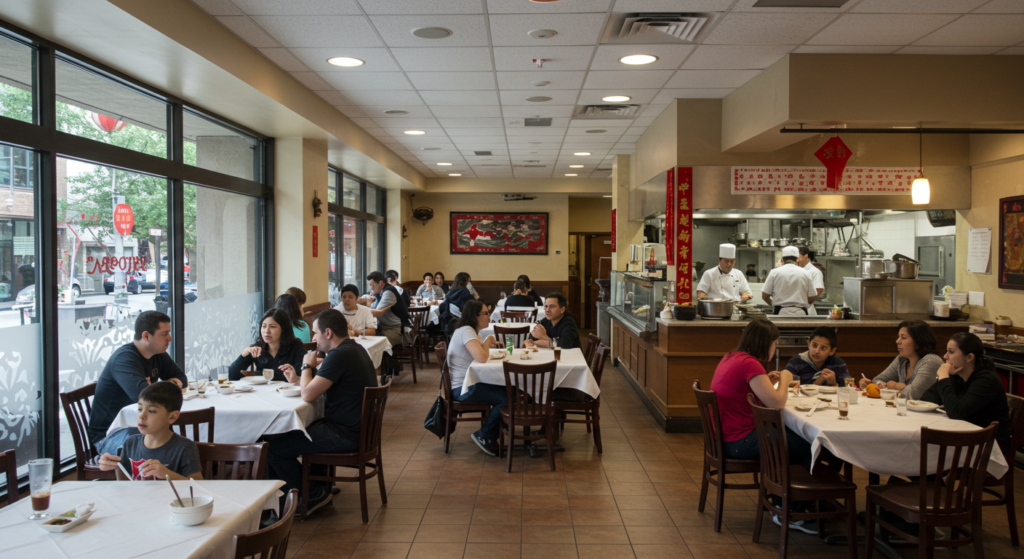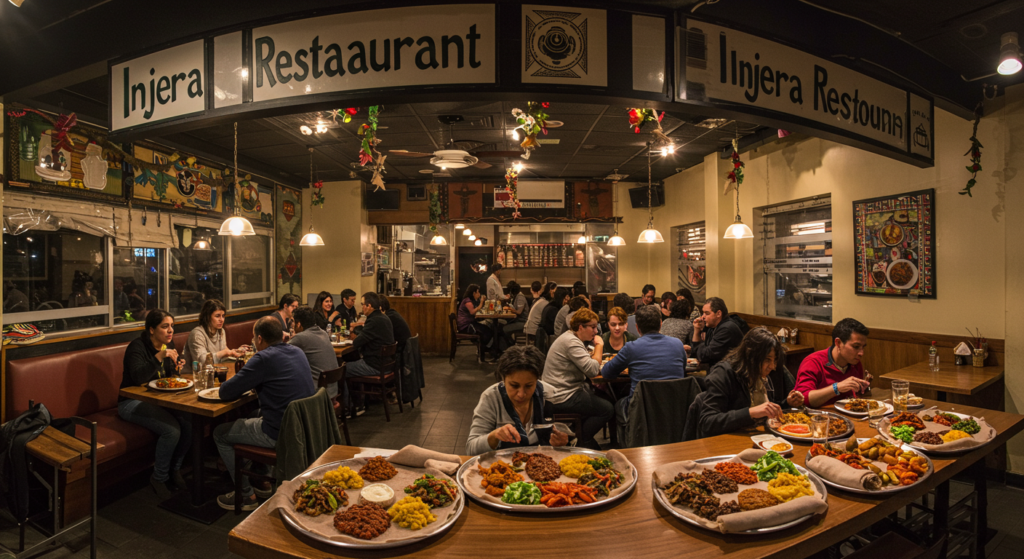Ethiopian food is a vibrant and deeply cultural cuisine that has captured the hearts and taste buds of food lovers worldwide. If you’ve ever wondered what makes Ethiopian cuisine so unique and why it’s gaining popularity in Canada, you’re in for a treat. This blog post will take you on an immersive journey into the rich flavors, history, and communal dining traditions of Ethiopian food, offering practical insights and locally relevant details that will deepen your appreciation for this extraordinary culinary heritage.
What Makes Ethiopian Food So Special?
At the heart of Ethiopian cuisine lies injera, a soft, spongy, sourdough flatbread made from teff, an ancient grain native to Ethiopia. Injera is not just a staple food; it’s also a utensil used to scoop up a variety of richly spiced stews called wot or wat. These stews are often made from lentils, vegetables, or meats and are seasoned with berbere, a complex spice blend featuring chili peppers, garlic, ginger, and other aromatic spices. The combination of injera and wot creates a unique texture and flavor experience that is both hearty and satisfying
Ethiopian food is renowned for its bold flavors and vibrant colors, but it’s also deeply tied to the country’s cultural and religious traditions. For example, the Ethiopian Orthodox Church’s fasting periods have inspired a rich array of vegetarian and vegan dishes, making the cuisine naturally diverse and inclusive
A Rich History Rooted in Culture and Agriculture
Ethiopian cuisine reflects the country’s agricultural heritage and diverse ethnic groups, including the Amhara, Oromo, Tigray, and Gurage peoples, each contributing their own culinary traditions. The use of teff, lentils, chickpeas, and spices is a testament to Ethiopia’s fertile land and long-standing farming practices.
Historically, Ethiopian food has evolved through religious influences and external contacts. The Orthodox Christian fasting rules have led to a wealth of plant-based dishes, while Islamic dietary laws have shaped meat consumption patterns. Additionally, the Italian occupation introduced pasta and tomato-based sauces, which have since been adapted into Ethiopian cooking
The Communal Dining Experience: More Than Just a Meal
Eating Ethiopian food is a social and cultural event. Meals are typically served on a large communal platter covered with injera, topped with various stews and salads. Diners use their hands to tear off pieces of injera and scoop up the food, sharing from the same plate. This practice, known as gursha, symbolizes friendship, respect, and community bonding
This communal style of dining is not only about nourishment but also about connection and hospitality, values that resonate strongly within Ethiopian culture and among Ethiopian communities in Canada.
Ethiopian Food in Canada: A Growing Culinary Scene
Ethiopian cuisine is flourishing across Canada, with vibrant communities bringing their culinary traditions to cities like Toronto, Vancouver, Calgary, Ottawa, and Montreal. These restaurants offer an authentic taste of Ethiopia, often using locally sourced ingredients to recreate traditional dishes.
Some notable Ethiopian restaurants in Canada include:
Addis Ababa Restaurant in Toronto

Known for its warm atmosphere and classic dishes like Doro Wat (spicy chicken stew) and Shiro (chickpea stew).
Injera Restaurant in Vancouver

Injera Restaurant in Vancouver Which emphasizes fresh, locally sourced ingredients and offers customizable platters.
Queen of Sheba in Calgary

Queen of Sheba in Calgary, famous for its lively decor and cultural events.
Ethiopian House

Ethiopian House in Ottawa, offering diverse vegetarian and vegan options.
Merkato Restaurant

Merkato Restaurant in Montreal, celebrated for its authentic flavors and communal dining experience
These establishments not only serve delicious food but also act as cultural hubs where Canadians can experience Ethiopian hospitality and traditions firsthand.
Practical Tips for Enjoying Ethiopian Food in Canada
- Embrace the communal style: Don’t be shy about sharing your platter and feeding others as part of the gursha tradition.
- Try vegetarian options: Ethiopian cuisine offers an abundance of flavorful vegetarian and vegan dishes, perfect for plant-based eaters.
- Ask about spice levels: Berbere spice can be quite hot; restaurants often accommodate different heat preferences.
- Learn about the ingredients: Teff flour, lentils, and spices like niter kibbeh (spiced clarified butter) are staples that give Ethiopian dishes their unique taste.
- Explore cultural events: Many Ethiopian restaurants host music nights and cultural celebrations, providing a richer dining experience.
Conclusion: A Culinary Adventure Worth Taking
Ethiopian food offers more than just a meal; it’s a journey into a culture rich with history, spirituality, and community. Whether you’re in Canada or anywhere else in the world, exploring Ethiopian cuisine opens up a world of flavors and traditions that are both unique and welcoming. So next time you’re looking for a new dining adventure, consider Ethiopian food—a feast for your senses and your soul.
